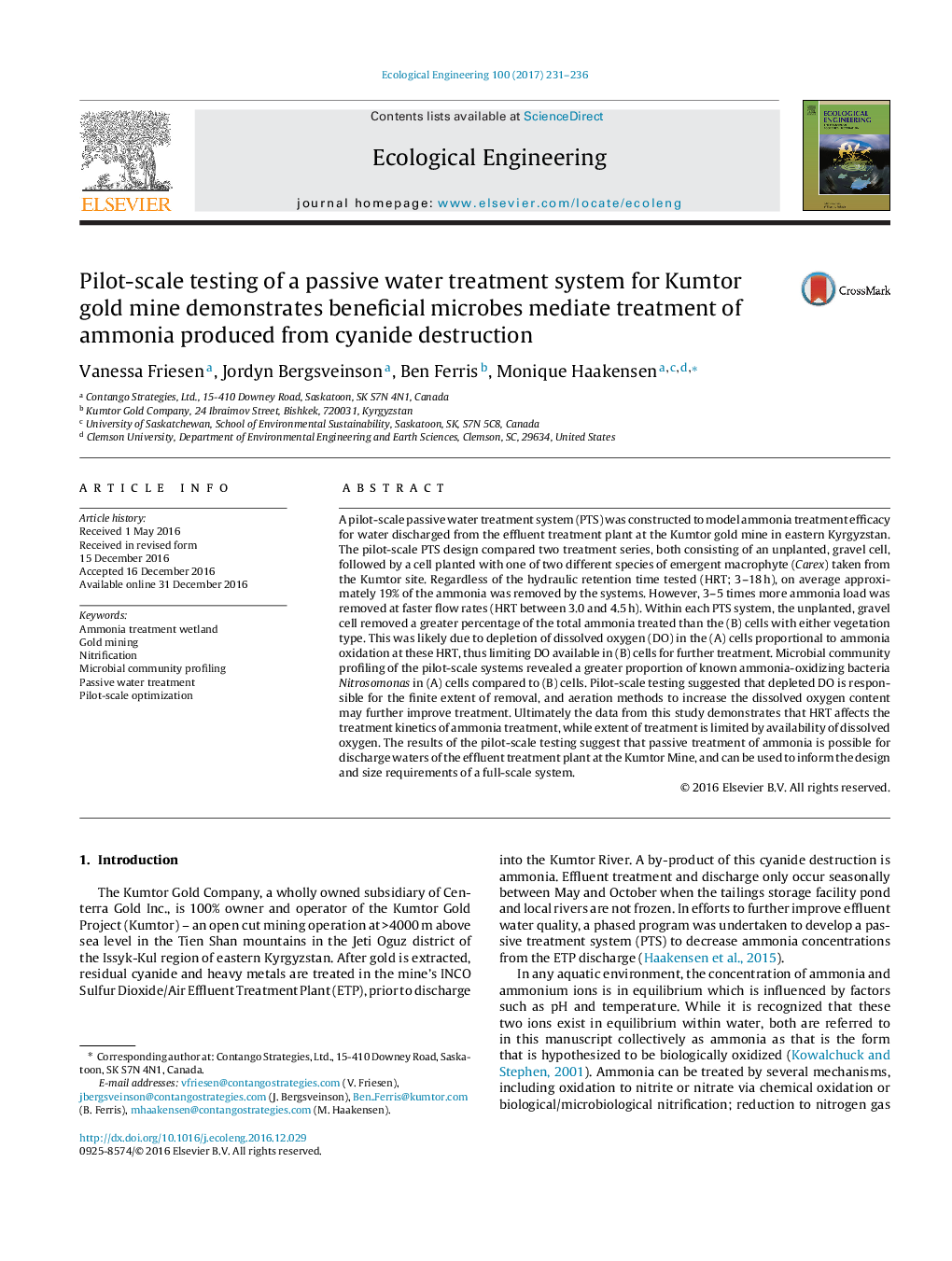| Article ID | Journal | Published Year | Pages | File Type |
|---|---|---|---|---|
| 5743724 | Ecological Engineering | 2017 | 6 Pages |
â¢Pilot-scale testing validated site-specific design of treatment wetlands for ammonia.â¢Ammonia resulting from cyanide destruction is treatable by passive means.â¢Greatest amounts of ammonia treatment were associated with highest abundance of ammonia oxidizing bacteria.â¢Extent of treatment was independent of hydraulic retention times tested.
A pilot-scale passive water treatment system (PTS) was constructed to model ammonia treatment efficacy for water discharged from the effluent treatment plant at the Kumtor gold mine in eastern Kyrgyzstan. The pilot-scale PTS design compared two treatment series, both consisting of an unplanted, gravel cell, followed by a cell planted with one of two different species of emergent macrophyte (Carex) taken from the Kumtor site. Regardless of the hydraulic retention time tested (HRT; 3-18Â h), on average approximately 19% of the ammonia was removed by the systems. However, 3-5 times more ammonia load was removed at faster flow rates (HRT between 3.0 and 4.5Â h). Within each PTS system, the unplanted, gravel cell removed a greater percentage of the total ammonia treated than the (B) cells with either vegetation type. This was likely due to depletion of dissolved oxygen (DO) in the (A) cells proportional to ammonia oxidation at these HRT, thus limiting DO available in (B) cells for further treatment. Microbial community profiling of the pilot-scale systems revealed a greater proportion of known ammonia-oxidizing bacteria Nitrosomonas in (A) cells compared to (B) cells. Pilot-scale testing suggested that depleted DO is responsible for the finite extent of removal, and aeration methods to increase the dissolved oxygen content may further improve treatment. Ultimately the data from this study demonstrates that HRT affects the treatment kinetics of ammonia treatment, while extent of treatment is limited by availability of dissolved oxygen. The results of the pilot-scale testing suggest that passive treatment of ammonia is possible for discharge waters of the effluent treatment plant at the Kumtor Mine, and can be used to inform the design and size requirements of a full-scale system.
